Dan calls it “faux-lognese,” that sea of tomato sauce with ground beef swimming in it. Real bolognese, Dan argues, is a ragù, or stew, of finely chopped aromatics and meats simmered with just a kiss of tomato paste, wine, and cream. And he knows because Ada Boni, the Mamma of Italian Cookbooks, said so.
Ada Boni captured authentic Italian cooking in the landmark Il Talismano della Felicità, (Talisman of Happiness, or simply The Talisman) (1928) which became Italy’s standard cookbook for many decades, influencing generations of cooks. Boni’s Italian Regional Cooking (1969) has long been Dan’s go-to reference, as trusted as if it were written by his own Italian grandmother, Maria Rosa Nicoletta Maddalena De Stefano Discenza (or simply Nicoletta).
Not a red sauce
Over time, however, bolognese has transmuted into a red sauce. Even the biggest of culinary bigshots—Craig Claiborne, Marcella Hazan (touted as the gold standard), and even Lidia Bastianich—couldn’t leave well enough alone without saucing it up with tomatoes. Julia Moskin wrote in the New York Times that in a ragù, the meat melts into the sauce. I say it’s the other way around: the sauce melts into the meat.
One of my cookbook heroes, Myra Waldo, was a prolific travel and food writer who, like Boni, linked each dish to its regional cuisine. In Seven Wonders of the Cooking World she noted that Bologna cooks with both butter (generally used in the North) and olive oil (preferred in the South). She described her authentic bolognese as a ragù typical of a city that loves its fats.
But lots of fats
And speaking of fats, chicken livers are the secret to over-the-top lushness. Like anchovies, they disappear into the background, adding a depth of flavor and richness that makes you smile but you can’t pin down. However, while I consider them essential, in Italy chicken livers appear to be no longer “de rigueur,” or rather, “de ragù.”*
The quantities here are for guidelines only. Adjust meat amounts and proportions to your taste, and go heavy on the aromatics if you are so inclined. It’s traditional to cook the sauce for an hour and a half, but we’ve found it cooks down nicely in only 45 minutes.
Dan usually serves bolognese on his homemade tagliatelle, but here we’ve used a hefty macaroni called gigli (or campanelle). Our neighborhood Stop & Shop sells its own imported gigli for a quarter of what you’d pay at Whole Foods, and it holds up well to the hearty bolognese.
For a bold, authentic ragù, don’t wimp out. Look these meats and fats squarely in the eye. You’ll be rewarded with the flavors Bologna originally had in mind, better than a faux-lognese even from Boston’s North End.
*NOTE, March 24, 2020: Maribel Agullo teaches Italian cooking in Bologna (Taste of Italy). She informed me (see comment below) that the official recipe for Ragù alla Bolognese as registered with Bologna’s Chamber of Commerce does not include chicken livers, and Italians don’t use them anymore. For our follow-up in-depth story, see “Classic Ragù Bolognese Redux: Do Chicken Livers Deliver?”
Ragù: Bolognese Meat Sauce
Adapted from Ada Boni’s Italian Regional Cooking
- 6 tablespoons butter
- 2 ½ tablespoons oive oil
- 1 onion, finely chopped
- 1 carrot, finely chopped
- 1 stalk celery, finely chopped
- 2/3 cup bacon, finely chopped (or pancetta)
- ¾ cup ground pork
- ¾ cup ground beef
- ¼ cup sausage meat
- 2-3 chicken livers, trimmed, rinsed and chopped
- 2/3 cup dry white wine (or vermouth)
- Salt and pepper
- 4 teaspoons tomato paste, or more to taste
- about 1 ¼ cup stock (we prefer chicken) or water, whatever needed to keep the sauce moist
- 4 tablespoons light cream or milk
- Heat half the butter and all the oil in a deep frying pan. Add onion, carrot, celery and bacon or pancetta, and fry over low heat until vegetables soften and begin to change color. Add the pork, beef, sausage meat and livers, frying gently until they begin to brown, crumbling with a fork. Moisten with wine and cook until it evaporates, then season to taste with salt and pepper. Dilute the tomato paste with a little stock. Stir this into the sauce, cover and cook slowly, stirring from time to time, gradually adding the rest of the stock.
- After the sauce has been cooking for 45 minutes, stir in the cream and continue cooking until it reduces. Finally add the remaining butter and stir until melted and thoroughly mixed into the sauce.
- Undercook macaroni or pasta a minute, remove from cooking water and add to the sauce to finish cooking and absorb flavor. Add a little pasta cooking water if needed.
Makes enough for 1 -1 ½ pounds of pasta. Serve with grated romano and/or parmesan.

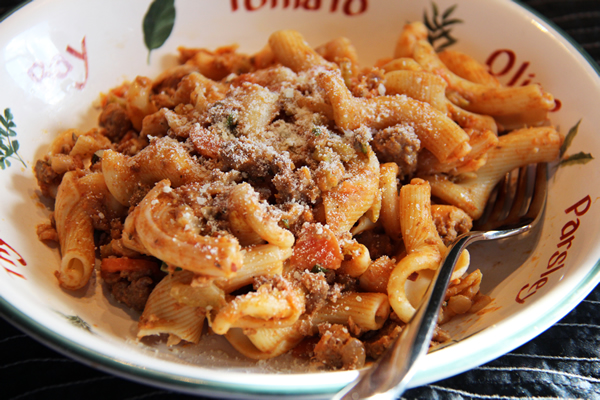

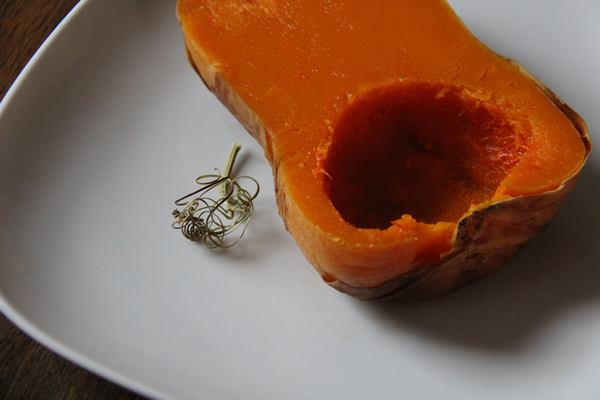

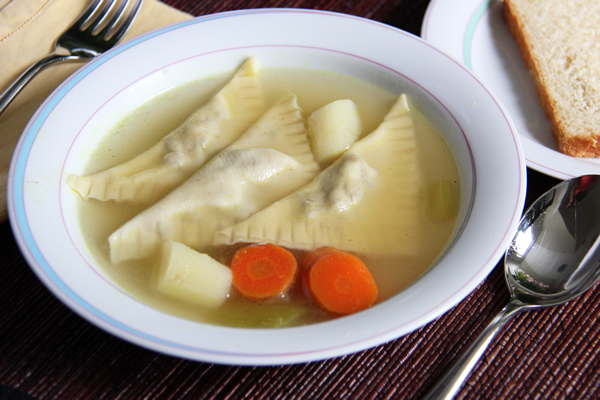
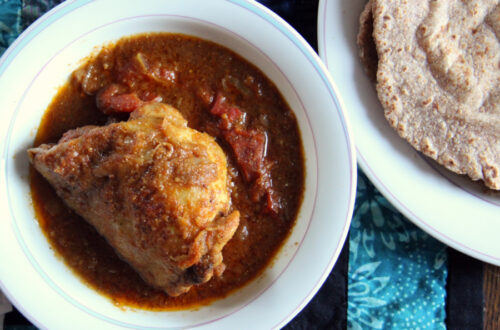
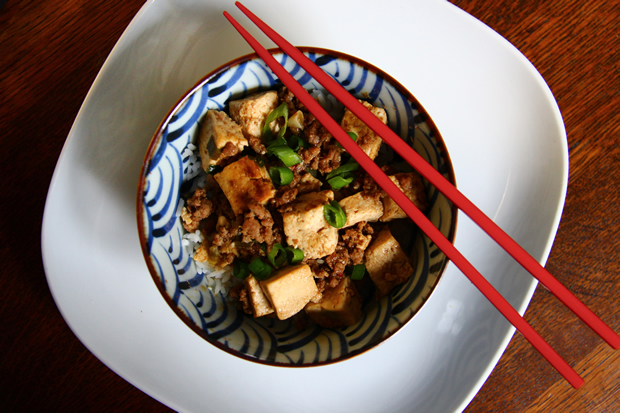
10 Comments
Sandra McKenzie
You probably don’t want to hear about the dinner party that ended rather abruptly thanks to our dog’s issues with flatulence, or the time another dog (and another husband) absconded with the Thanksgiving turkey, so I’ll have to give some thought to this. Recipes, though…You want recipes? That I can provide. Hubs is the recipe follower, whereas I’m more free-form. The joke around here is that I can start out making a chocolate cake, but with substituting one ingredient I’m out of, or tweaking the recipe somewhere else, I’m liable to end up with lasagna.
(And speaking of food — hubs just noticed that a package of pancetta he bought today is both gluten free and lactose free. Who woulda thunk it, eh?)
Diane Brody
Hey Sandra,
Have you heard the British expression, “a dog’s dinner”? It roughly means “a mess.” I think that’s what your dogs lovingly gave you.
These days, your talent for substitutions is no doubt coming in handy. Today’s New York Times email is entitled, “Substitution City.” They coincidentally include a recipe for lasagna, but there’s no cocoa involved.
Thanks for writing in,
Diane
Sandra McKenzie
I’m in the midst of cooking Ada Boni’s ragu right now. I’ve been using this recipe (without chicken livers) for about 30 years or more, ever since spotting her regional cooking book on a friend’s bookshelf. I scored my own copy when a local bookshop went out of business, and I’ve never looked back. I love this ragu! I love this book — I’d run back into a burning kitchen to save it.
My husband (a very enthusiastic and accomplished cook) came across your blog, and I’m very happy he did. I’ll be poking around here fairly frequently, and will happily pass on the info to other cooking friends.
Diane Brody
Thanks, Sandra! I guess we’re all members of the Ada Boni fan club. My husband (whose father was born in Italy, so he’s got homemade pasta and ragu in his DNA) and I are gearing up to test the method without chicken livers that Maribel suggests above. So stay tuned.
I’m so happy your husband discovered my blog (it’s fairly hidden amongst all the clutter in the blogosphere) and really appreciate your writing me. Say, maybe you or your husband has a recipe with a good story you’d like to share? Sorry, I have to ask.
Thanks again,
Diane
Maribel Agullo
Hi Diane,
yes the situation in Northern is tremendous – the virus is clearly highly contagious, much more than anyone expected. That said, I am thankfully, safe in Bologna.
I believe that the use of the livers helps create that depth of flavor when you cook the vegetables first. Try cooking the meat first with no condiments – just the meat with some fats (butter, oil) and once you’ve had the Maillard effect then add the veggies, cook them for a bit and proceed with the recipe.
Talk about an epiphany! Try it and let me know what you think. 🙂
Diane Brody
Thanks, Maribel for this smart alternative! When I buy a whole chicken, I’ll freeze the liver to use in the ragù. But I’ve noticed livers are getting rarer in those little giblets bag. Your solution looks great, and we will try it. Take care!
Diane Brody
Hi Maribel,
First of all, I am concerned about you and your family as I read news of the dire circumstances in Italy. I just found your comment, and a lot has transpired in the last couple of weeks. My husband’s father was born in Campobasso, and we have relatives we hope are safe. My heart goes out to all of you in this perilous time.
My blog is a great diversion these days as we shelter in place, so I can’t tell you how grateful I am for your comment. I got my recipe from the 1969 edition of Italian Regional Cooking, where the chicken livers were still an ingredient. I must confess, however, that I didn’t notice that Boni wrote “optional” next to the livers! I guess they no longer were “de rigueur” (or rather “de ragù”) even at that time. I have always found them so essential to the rich flavor that I couldn’t imagine them optional. I’m with your husband’s grandmother.
Thank you so much for this wonderful perspective. I didn’t realize that there was an official recipe registered in Bologna’s Chamber of Commerce–of course there would be! I will probably modify this post to reflect your research.
Thank you again, and best wishes for safety and health.
Diane
Maribel Agullo
Hi Diane,
I have lived in Bologna, Italy for the past 24 years. I’ve been studying Ada Boni’s Piccolo Talismano della Felicità for 2 days (this is how I found you) now.
What Ive noticed is that many of the recipes in the 1962 edition have changed; that is to say, Italians don’t cook that way anymore.
Regarding your post, not sure why but chicken livers are no longer used in our ragu’ – the recipe is otherwise the same. In addition, the recipe deposited in Bologna’s Chamber of Commerce in 1972 (just 10 years later) doesn’t have the chicken livers.
I’d have to ask around why the change – I can tell you that my husband’s grandmother added livers to her ragu’ though.
Thanks for your post, I enjoyed reading it. 🙂
Mike Hess
I frequently page through my treasured copy of Italian Regional Cooking just to see the incredible photographs at the beginning of each regional chapter. I love Bologna and have visited many times over the years. This recipe absolutely captures the essence of a correct, proper ragu.
Diane Brody
Dear Mike,
I bought a second copy of Italian Regional Cooking at a library sale just in case something happens to ours. Thanks for confirming authenticity. Any favorite recipes from your travels that you’d be willing to share? (BTW, I think it’s the chicken livers. I don’t trust a bolognese recipe without chicken livers.)
Thanks, Diane